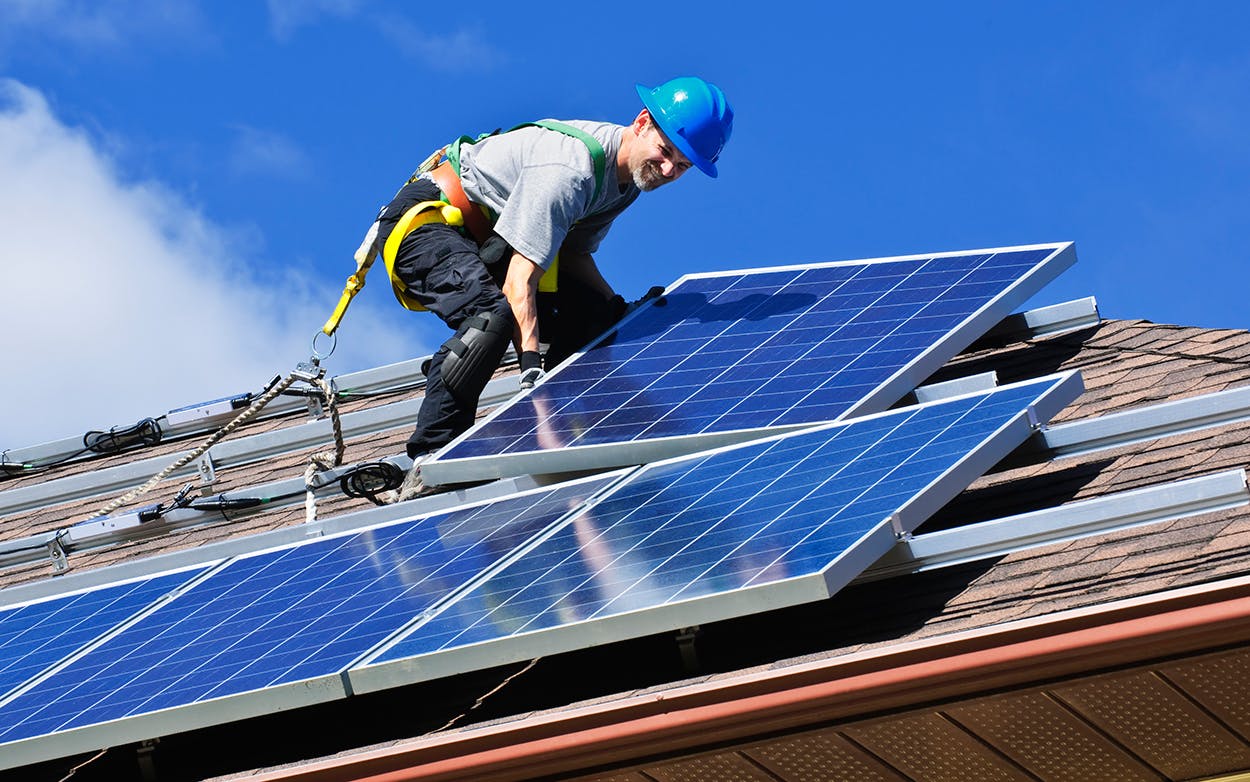During the last several years, the solar industry in Texas has grown at a rapid pace. Large-scale solar farms have popped up across the state, and just last week, a South Korean energy company broke ground in Pecos County on what will become the largest solar project in Texas.
But beginning next month, imported solar panels and energy cells—the building blocks of such projects—will be subject to high tariffs. Earlier this week, the Trump administration announced the new tariff, which will start at 30 percent and will drop down to 15 percent over a four-year period.
“We’ll be making solar products now much more so in the United States,” Trump said at the White House ceremony where he signed the executive action. “Our companies have been decimated, and those companies are going to be coming back strong.”
Trump added that the tariffs will “create jobs in America for Americans.”
But solar industry experts worry the move is more likely to do the opposite, killing American jobs and hurting solar energy’s competitiveness with other energy sources. The Solar Energy Industries Association, a nationwide trade organization, did not mince words about its opinion on the move, calling it “a loss for America” that will cost an estimated 23,000 jobs in 2018, as well as raising prices and cancelling billions in planned solar projection.
Currently, “solar voltaic installer” topped the Bureau of Labor Statistics’ list of occupations that are forecast to see the fastest growth through 2026, followed only by “wind turbine service technician.” And according to 2016 statistics from the Texas Solar Power Association, some 9,396 people work in the solar industry in Texas, an increase of 127 percent over a three-year span.
The two domestic solar manufacturers who pushed for the change, Georgia-based Suniva Inc. and Oregon-based SolarWorld Americas, however, argued that the tariffs will lead to a boom in domestic solar manufacturing and create jobs in that sector. (It’s worth noting, however, that both companies are foreign-owned.)
What does all this mean for the future of the solar industry in Texas? “It’s a setback for solar in Texas but we’re still very optimistic that the industry will still continue to grow,” Charlie Hemmeline, executive director of the Texas Solar Power Association, said in a phone call. “In the near term this may lower demand as prices are forced up, which has a potentially negative impact in terms of investment and jobs.”
Texas currently has 1,800 megawatts of installed solar, and an additional 27,000 megawatts—enough to power some 5.4 million homes—in “some stage of development,” Hemmeline said, citing figures from the electricity market analysis firm, GTM Research. “I have no doubt we’ll build out a lot of that,” he said. “Texas has all the fundamentals you’re looking for in a solar market.”
The tariff is more likely to have a direct impact on 2019 solar projects than on those already in progress this year, Hemmeline added. “Projects that are already underway will have likely already secured their supply,” he said
- More About:
- Politics & Policy
- Energy
- Donald Trump







